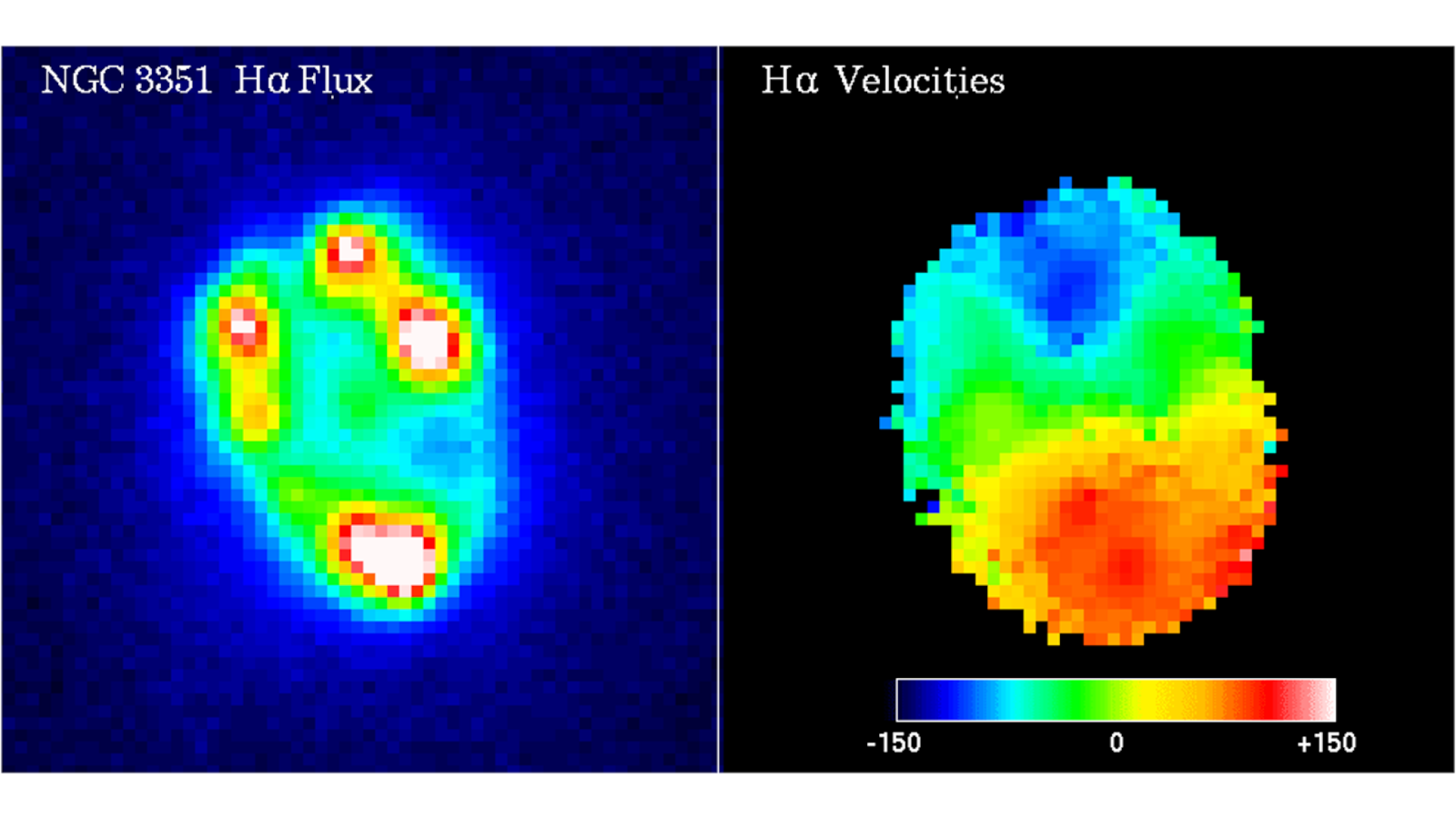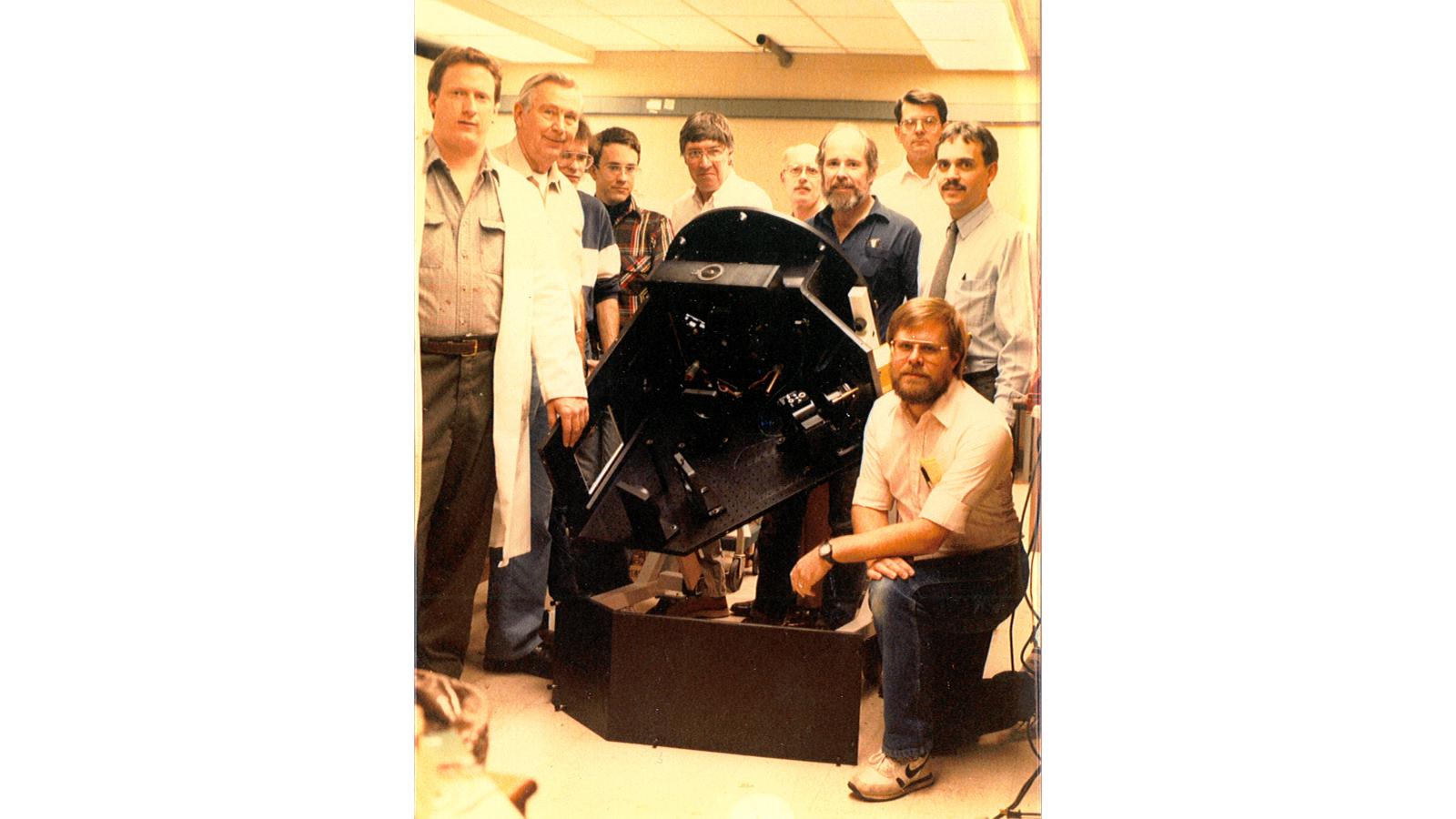Imaging Fabry-Perot Spectrograph (IFPS)
The Imaging Fabry-Perot Spectrograph (IFPS) was a facility instrument built for the 1.8 Perkins Telescope operated by the Lowell Observatory at its Anderson Mesa site located outside Flagstaff Arizona.
The IFPS was designed for two-dimensional imaging spectrophotometric and kinematic studies in the 340-1000nm wavelength range using four 50mm-diameter Fabry-Perot étalons providing low and medium spectral resolutions of R=1200 in the 450-750nm A wavelength range, and R=4500 in three bands covering the 340-400nm, 410-550nm, and 600-700nm. These resolutions made it applicable to a wide range of galactic and extragalactic imaging spectrophotometry projects. The IFPS has also found use as direct imaging focal camera without the étalons in the beam.
The IFPS was operated from 1990 until 1998 when OSU sold its share of the Perkins telescope to Lowell Observatory. The IFPS was the first instrument designed and built by the ISL from conception to commissioning.
Funding for the IFPS was provided by NSF Grants AST-8822009, AST-9112879, and OSU start-up funds for J. Baldwin and R. Pogge
Instrument Specification
- Project type: Facility Instrument - imaging spectrograph
- Wavelength: 340-1000nm
- Resolution: R=1200 and 4500 using capacitively-stabilized Fabry-Perot etalons
- Field of View: 6.5x6.5-arcmin
- Mode/Modes: seeing-limited F-P imaging spectroscopy and direct imaging with filters
- Primary science: galactic and extragalactic emission-line sources, general imaging
- Telescope: 1.8-m Perkins Telescope, Lowell Observatory, Anderson Mesa, AZ USA
- Years active: 1988-1998
- Reference: Pogge et al. 1995, PASP, 107, 1226
Instrument Facts
- Focal reducing system using lenses and a folding flat mirror to form a 50mm diameter pupil
- Fabry-Perot mode used 4 ET50-series pizeoelectric actuated etalons built custom by Queensgate Instruments.
- Pre-filtering of the F-P bandpass used narrow-band filters near the telescope focal plane that could be tuned using a tiltable filter wheel assembly
- With the etalons removed from the beam, the IFPS was used as a direct imaging camera with filters.
- Optics were built in 2 stages, the first using commercial OTC components, then second using custom optics to extend the range into the near-UV
Instrument Team
Jack Baldwin and Bradley Peterson (PIs)
Bruce Atwood (ISL director, detector systems)
Richard Pogge (Postdoc and Project Scientist)
Tom O'Brien (Mechanical Engineer)
Paul Byard (Optical Designer)
Ryland Truax (Instrument software)
Arne Henden (Control Software)
Ed Teiga (Electronics technician)
Kevin Dummel (Electronics technician)
Jerry Mason (Software Systems Developers/Engineer)
Dave Brewer (Instrument maker/machinist)
Robert Walton (Instrument maker/machinist)
Bill Welsh (Grad student, software)
J. Michael Owen (Grad student)
Filters: Lowell Observatory, Retired, Instrument



![[S II] map of the Ring Nebula with the IFPS](/sites/default/files/styles/slideshow_image/public/2024-01/IFPS_RingNebula_SII.png?h=8abcec71&itok=IiJl3nu4)


